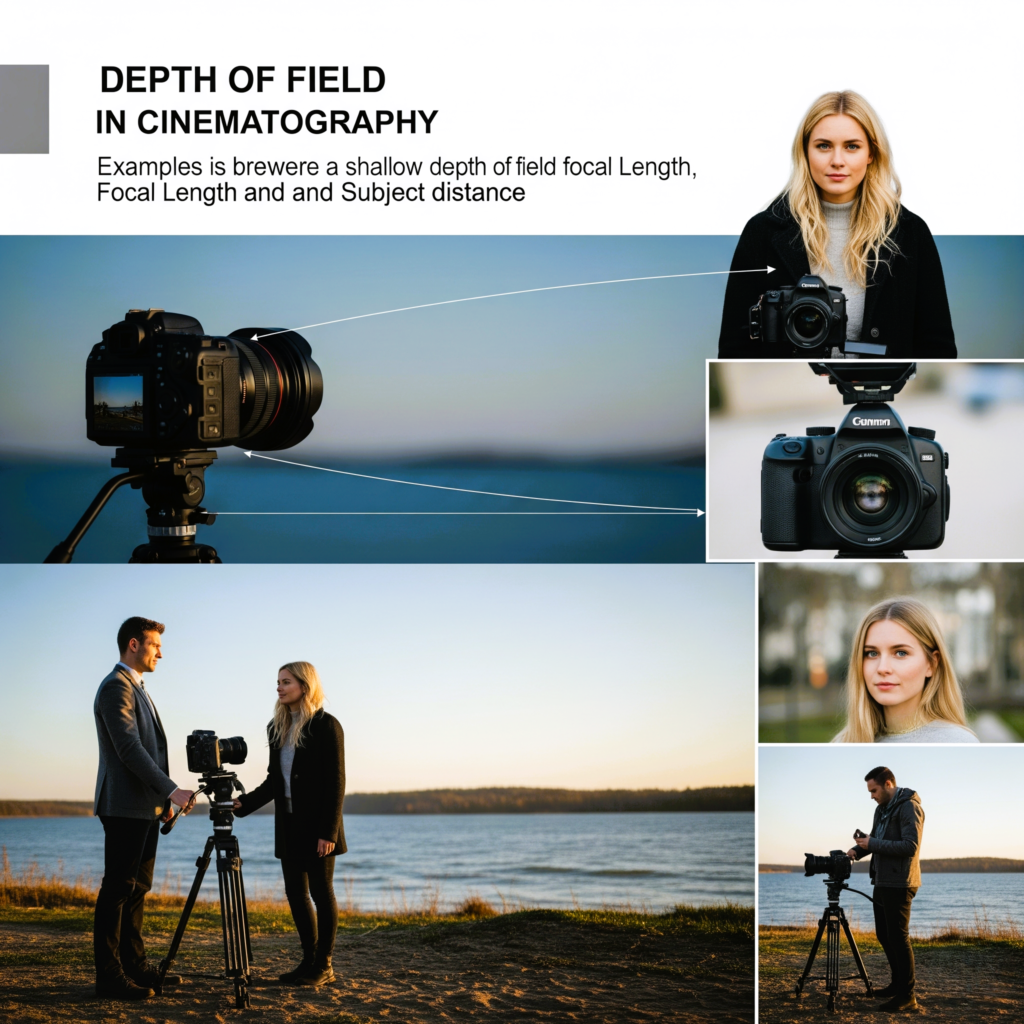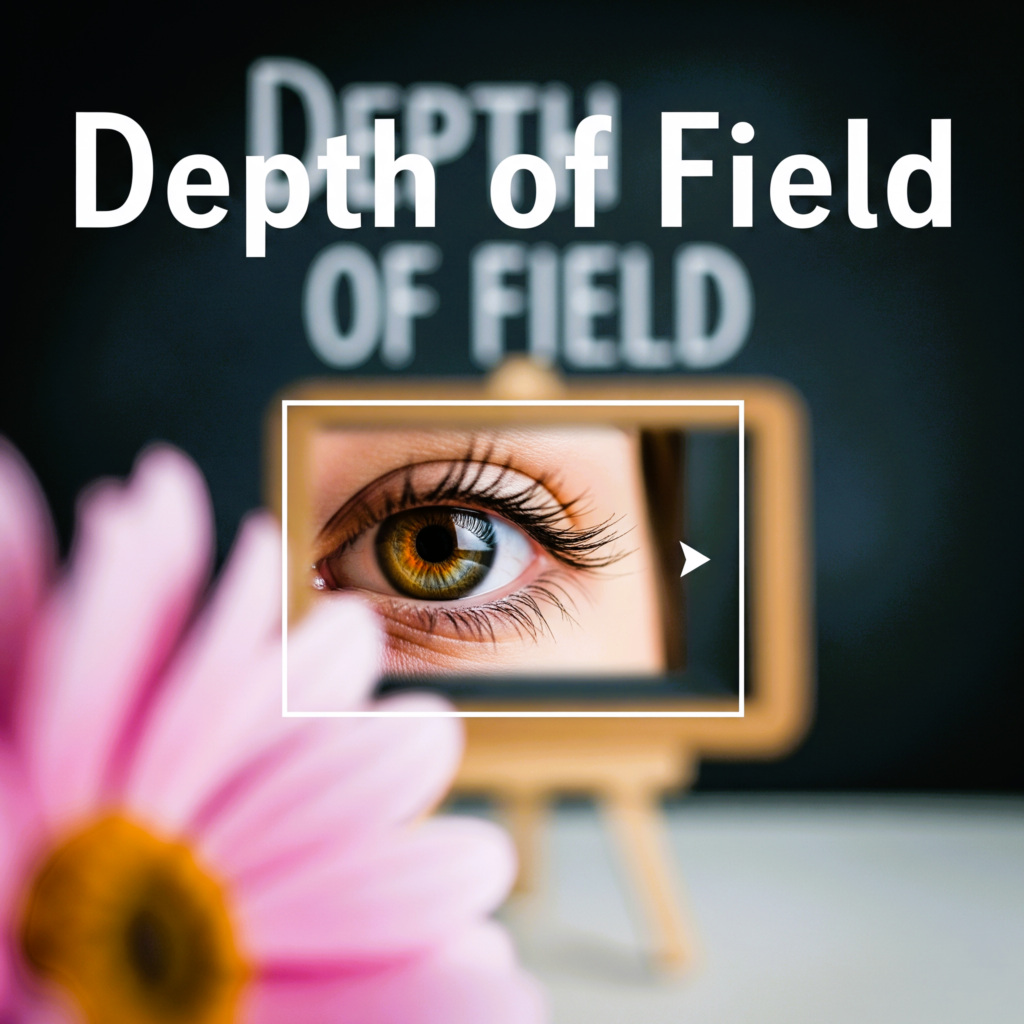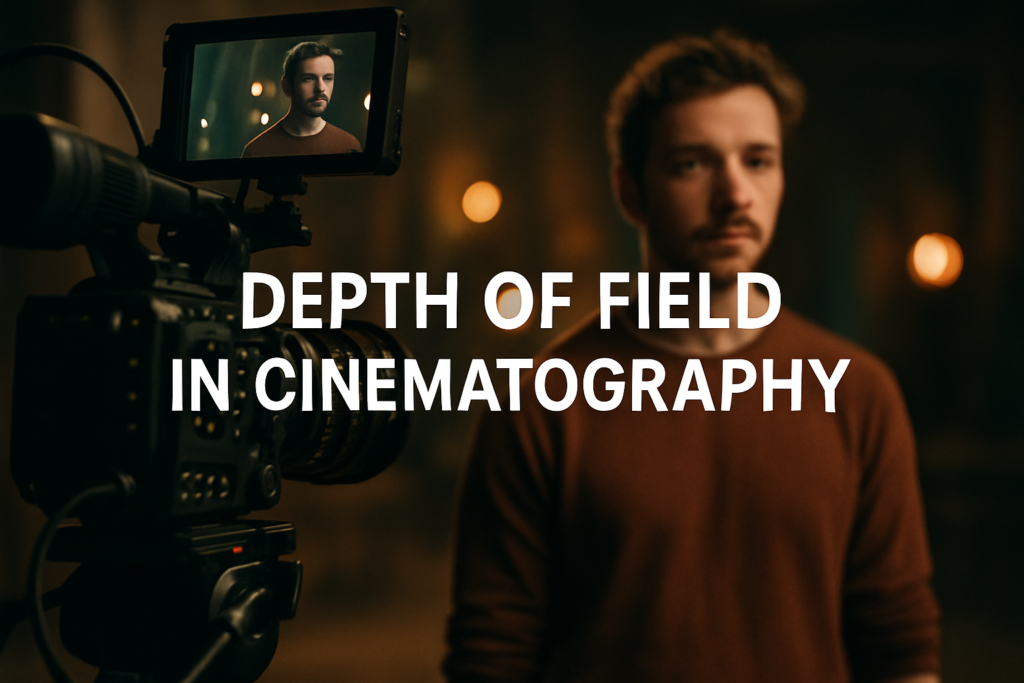
What is Depth of Field in Cinematography?
Through the Lens: An Understanding of the Art of Focus and Emotion.
Not everything in a movie has to be in focus; just what is important is.
One of the most effective narrative techniques in a cinematographer’s toolbox is depth of field at this point. It shapes emotion, directs the viewer’s gaze, and creates visual poetry inside the frame.
In this blog, we’ll explore the true meaning of depth of field (DoF) in cinematography, its significance, and how to become proficient with it to produce visually striking and emotionally charged images.
What is Depth of Field?

The separation between the closest and furthest objects in a scene that show up reasonably crisp in a photograph is known as depth of field.
- The subject of the picture is crisp, while the backdrop and/or foreground are blurry, indicating a narrow depth of field.
- A large portion of the image, from foreground to background, stays in focus when the depth of field is deep.
DoF is like having control over the audience’s gaze and emotions.
Why Cinematography’s Depth of Field Is Important?

The decision of depth of field is not only a technical one.
The choice is narrative in nature.
This is what it enables you to do:
Call attention to a person, thing, or feeling.

- Use shallow focus to create closeness in close-up shots.
- Use deep focus in broad pictures to provide context and setting.
- Control the visual narrative without using conversation or cuts.
- Include a dreamy, enigmatic, transparent, and chaotic tone and vibe.
Factors Affecting Depth of Field
How much of your image remains in focus depends on a number of things. Gaining an understanding of them allows you complete creative power.
1. Aperture (f-stop)
- The depth of field decreases with increasing aperture (e.g., f/1.4).
- The depth of field increases with aperture size (e.g., f/16).
Consider the aperture to be your weapon of focus. Deep = observant, shallow = affective.
2. Focal Length
- Depth of field is decreased and backdrop is compressed with longer focal lengths (e.g., 85mm, 135mm).
- Naturally, there is more depth in focus with shorter focal lengths (such as 24 or 35 mm).
Isolation is possible with telephoto lenses. Inclusivity is achieved through wide lenses.
3. Subject Distance
- The depth of field decreases as the subject gets closer to the camera.
- The depth of field increases with distance.
A broad photo at f/2.8 appears different from a close-up.
4. Sensor Size
- Shallower depth of field is produced by larger sensors (Super35, Full-frame).
- Deeper DoF is a natural feature of smaller sensors (Micro Four Thirds).
When to Make Use of Shallow Depth of Field
- Emotional moments: separate characters in times of conflict, love, or loss.
- Scenes that are introspective: pay close attention to a face, eyes, or other feature.
- Styled images: romantic, dreamy, and fantastical narrative.
Example: The shallow DoF in Her (2013) highlights Theodore’s inner world and loneliness.
Use of Deep Depth of Field When
- Establishing shots: used to convey context, geography, and space.
- Ensemble scenes: when several characters need to be in the same frame of view.
- Realistic tone: when the filmmaker desires a detached, documentary-style vibe.
Example: Deep focus is employed in Citizen Kane (1941) to depict many levels of narrative in a single frame.
Depth of Field Expert Cinematographers
- Shallow Depth of Field is used by Roger Deakins (1917, Blade Runner 2049) to establish intimacy and intense focus for world-building.
- For vivid naturalism, Emmanuel Lubezki (The Revenant, Birdman) combines narrow focus and wide lenses.
- For dramatic effect, Gordon Willis (The Godfather) mastered the use of narrow depth of field and chiaroscuro lighting.
Advice for Your Projects on How to Master Depth of Field
- Know the tone of your tale. Dreamy and gentle? or grounded and sharp?
- Be careful when using lenses. Style is determined by focal length.
- Don’t blur too much. Aim for a shallow depth of field; not all shots require bokeh.
- Add blocking to it. Actors can move in and out of focus to create dynamic images.
- Apply DoF transitions. Focus pulls, sometimes known as rack focus, may change the mood of a situation.
Expert Advice: Blur Isn’t the Only Factor
Shallow depth of field is sought for by many novices for aesthetic reasons. As a visual storyteller, however, it is your responsibility to convey a sense of strength rather than beauty.
What do you want the audience to focus on—or overlook?
The amount of your frame that should be in focus is indicated by that response.
Real-World Situations
| Scene Type | Recommended DoF | Purpose |
|---|---|---|
| Intimate dialogue | Shallow (f/1.4 – f/2.8) | Emotional isolation |
| Action sequence | Medium (f/4 – f/5.6) | Balance subject + environment |
| Landscape shot | Deep (f/8 – f/16) | Show full scope + clarity |
| POV shot | Shallow or Medium | Viewer immersion |
In summary, focus is an emotion.
Depth of field is more than simply a numerical value in cinematography; it’s an emotion.
Look here, it whispers.
It yells, “Ignore the others.”
It enables you to concentrate on the heart and block out the background.
Ask yourself, then, “What emotion lives in this focus?” the next time you change your lens, tweak your aperture, or move your subject.
For by manipulating depth of field, you may influence emotion in addition to vision.
Visual Storyteller and Director of Photography,
Vimall S Mishra